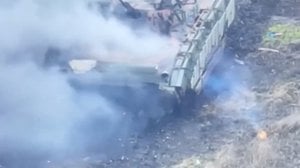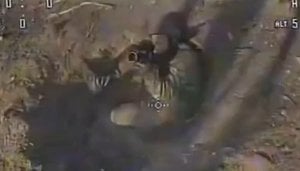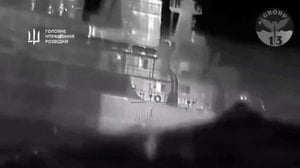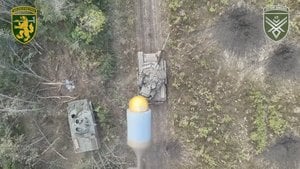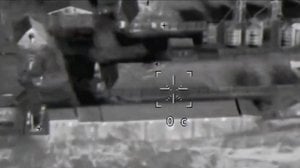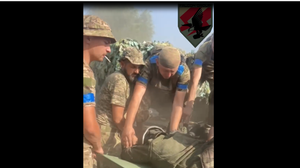
Ukrainian T-64 Survives Two Suicide Drones
Published 1 years ago
A stationary Ukrainian is struck first by one, then by a second Lancet Kamikaze drone. The first glances off the frontal armor and the second appears to hit the turret mantlet. A crewmember sees the first drone, leaps from the tank, and falls to the ground as it explodes. He then ducks behind the track on the front right side of the tank before the second drone strikes.
Given that the tank is stationary and does not attempt to maneuver, it may already be disabled, but the tank is sufficiently tough enough that the explosive charges in the drones do not penetrate the armor and cause secondary detonations of the ammunition and fuel. When it was introduced in the early 1960s, the T-64 was considered an improvement over the T-55 and T-62, and featured many technological advancements such as an autoloader, a stabilized main gun, a driver’s night vision periscope, and composite armor made of aluminum alloy sandwiched between steel plate. After the dissolution of the Soviet Union, Ukrainian T-64s underwent a modernization program that included the installation of reactive armor and active protection systems, although the latter did not seem to be a factor in this engagement.
About the Author

Cam
Cam served as an infantry officer in the Marine Corps, deploying to the Horn of Africa and participating in combat operations in Iraq. He currently works in the maritime industry and in the defense sector as an instructor of combined arms planning and operations. An avid sailor, Cam founded and directs a nonprofit that supports veterans and first responders through sailing.






